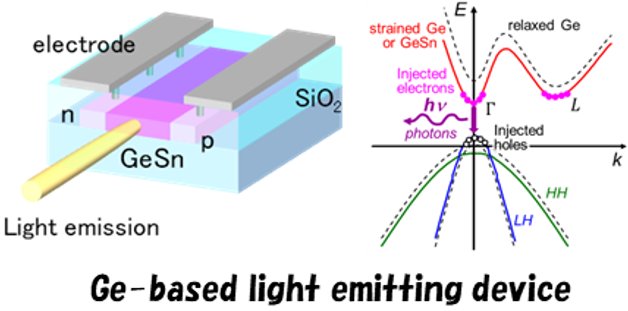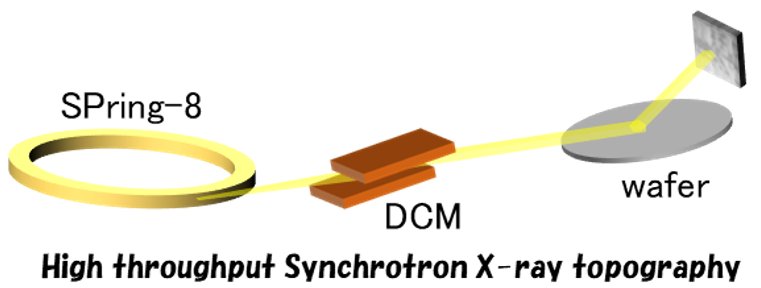Low-power optoelectronic hybrid devices using group IV mixed crystal semiconductors
The rapid acceleration of digitalization and IoT integration is pushing existing information and communication systems to their limits in both transmission and processing capabilities. The convergence of electronics and photonics is seen as a key technological breakthrough to overcome these challenges. By integrating optical devices with electronic components, we can achieve faster data transmission and ultra-low power consumption. In addition, this fusion holds promise for applications in quantum information technology, biosensing, and ultra-high-speed image sensors. Our research focuses on realizing the true synergy between electronics and photonics through the development of optoelectronic hybrid devices using germanium (Ge) and germanium-tin (GeSn), both group IV materials similar to silicon.

Advancing Power Devices with Wide Bandgap Semiconductors through X-ray Topography
Power devices are semiconductor elements that convert and control electric power, and are widely used in a wide range of fields, from automobiles to industry and energy. In recent years, with the increase in demand for electricity and the worsening of environmental problems, the realization of high-performance power devices that enable the effective use of electric energy is expected. Currently, devices using Si semiconductors are mainstream, but the performance improvement of Si devices has reached its limit, and hopes are pinned on power devices using wide band gap semiconductors, such as SiC. However, unlike Si, wide band gap semiconductor substrates have many crystal defects, making defect engineering important. We aim to improve the reliability and productivity of power devices, centering on crystal evaluation methods using X-ray topography.
